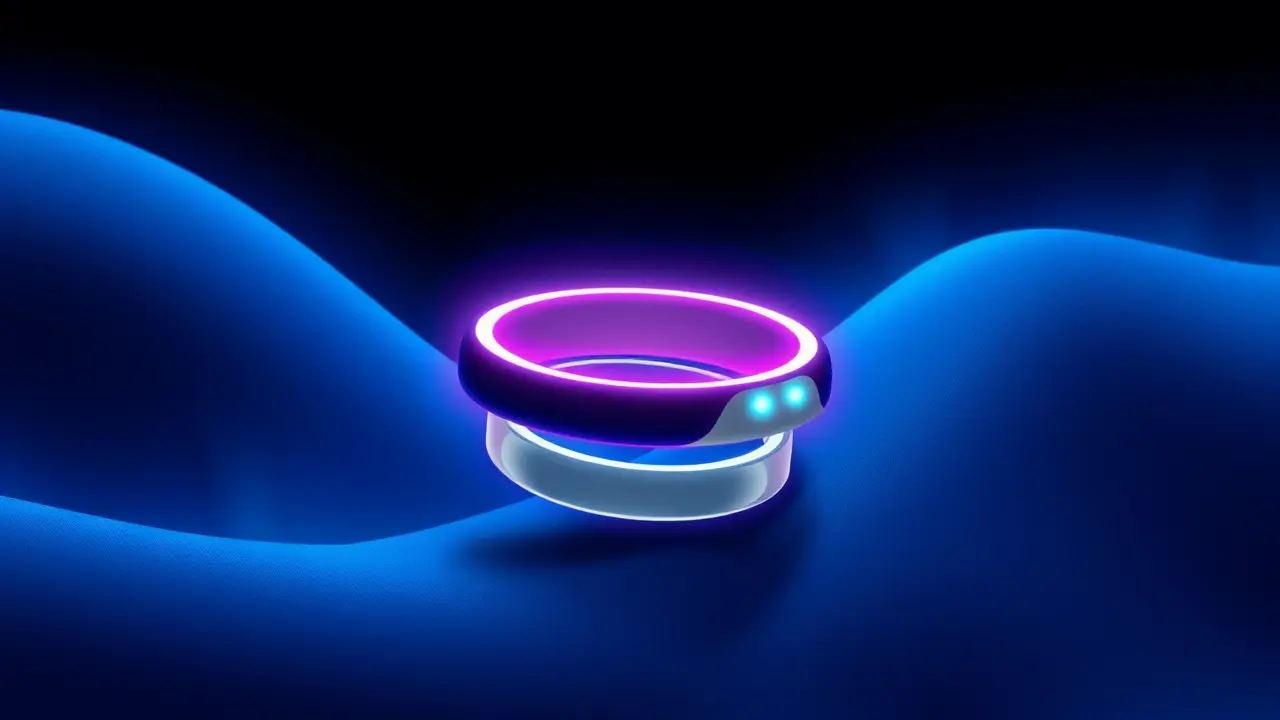
AInlp & speech
Former Meta Employees Launch Voice-Controlled Smart Ring
SO
Sophia King
13 hours ago7 min read7 comments
The landscape of personal technology is undergoing a quiet but profound transformation, shifting away from the glowing rectangles that have dominated our attention for decades toward more intimate, ambient forms of computing. This new wave of voice-based hardware, designed for companionship, productivity, or personal growth, feels less like a gadget and less like a natural extension of the self.We've seen the emergence of card-shaped devices from Plaud and Pocket that slip into a wallet; pendants from Friend, Limitless, and Taya that hang close to the heart; and the Bee wristband, whose success was so resonant it was absorbed into the Amazon ecosystem. These aren't just new products; they are new canvases for interaction, moving computing off the screen and into the fabric of our daily lives.Into this creatively charged space steps Sandbar, a startup founded by two former Meta interface design veterans, launching a voice-controlled smart ring. This is a significant pivot.These designers aren't just engineers; they are artists of human-computer interaction, schooled in the complex dance of making digital interfaces feel intuitive and, at their best, invisible. Their move from the vast, interconnected virtual worlds of Meta to the intensely personal, physical scale of a ring speaks volumes about where they believe the next frontier of design lies.It’s a move from designing for the masses to crafting for the individual, from a visual-centric paradigm to one governed by voice and touch. A smart ring is a particularly daring canvas.It’s a piece of jewelry, a personal statement, and a powerful computer all in one. The design constraints are immense—battery life, processing power, microphone and speaker quality, all crammed into a form factor that must be comfortable, durable, and aesthetically pleasing 24/7.Unlike a phone you can put away or a watch you can take off, a ring is a constant companion. This necessitates a design philosophy centered on subtlety and seamlessness.The user experience must be so fluid that the technology fades into the background, activating with a simple voice command or a discreet gesture, rather than demanding the user’s full visual attention. Imagine sketching a new product idea while walking, your hands full, and simply murmuring a command to your ring to record a voice memo.Or being in a meeting and subtly tapping your ring to transcribe the conversation directly into your notes app. This is the promise of ambient computing—intelligence that assists without intruding, that empowers without overwhelming.The choice of voice as the primary interface is a masterstroke of user-centric design. It’s the most natural, human way we communicate, and it liberates us from the tyranny of the keyboard and the touchscreen.For creatives, from writers and musicians to designers and architects, this could be revolutionary. The friction between a nascent idea and its capture is reduced to zero.The ring becomes a silent, ever-present collaborator. However, this future is not without its shadows.A device that is always on you, always listening, raises profound questions about privacy and data sovereignty. The very intimacy that makes the ring so powerful also makes it potentially invasive.Where is this audio data processed? Is it on the device or in the cloud? Who has access to these recordings of our most private moments, our half-formed ideas, our casual conversations? The founders, given their background at Meta, a company perpetually under the microscope for its data practices, will need to be transparent and build trust from the ground up. They must architect not just a product, but a privacy-first ethos that is as elegant and robust as the ring’s physical design.This is their greatest design challenge yet. Furthermore, the success of such a device hinges on its ecosystem.A ring cannot be an island. Its true potential is unlocked through seamless integration with other tools and platforms—calendar apps, project management software, smart home devices, and creative suites like Adobe or Figma.The developers must provide a rich SDK that allows other creators to build upon their platform, turning the ring into a key that opens many doors. The market for wearable AI is becoming crowded, but it's also wonderfully diverse.Each form factor—the pendant, the pin, the ring—catersto a different user preference and context. Sandbar’s ring isn't necessarily competing with all of them; it's carving out its own niche for those who value discretion, continuous wearability, and a hands-free experience.It’s a bold experiment in minimalism, a bet that less interface can lead to more connection—connection to our own thoughts, to our work, and to the world around us, unimpeded by a screen. If these ex-Meta designers succeed, they won't just have launched another smart device; they will have painted a new, more human picture of how we interact with technology, turning the subtle circle of a ring into a powerful portal to a more intuitive future.
#voice hardware
#wearable technology
#music control
#voice notes
#startup
#Sandbar
#former Meta employees
#lead focus news
Stay Informed. Act Smarter.
Get weekly highlights, major headlines, and expert insights — then put your knowledge to work in our live prediction markets.
© 2025 Outpoll Service LTD. All rights reserved.